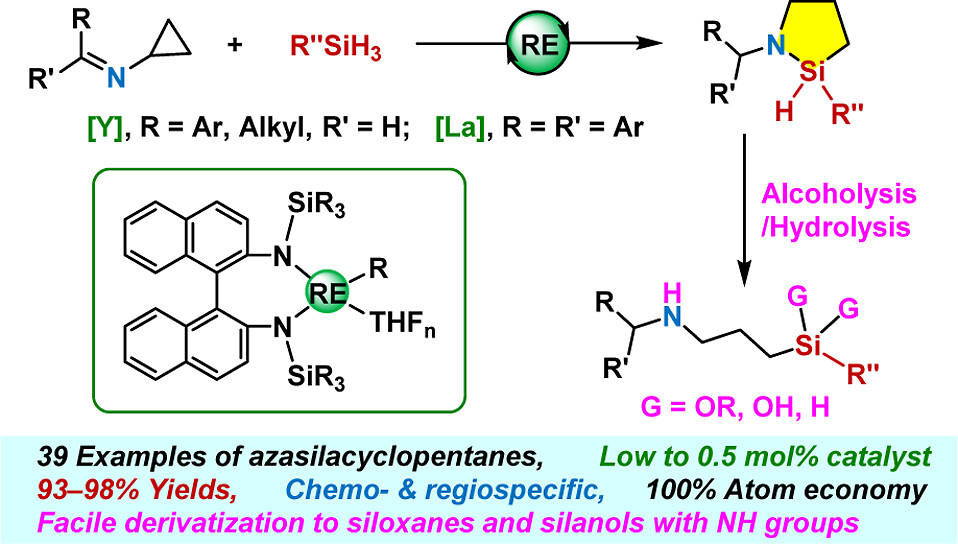
Nitrogen heterocycles are important in synthesis, material science, and medicinal chemistry. The replacement of one or more carbon atoms in the skeletons with silicon atoms, which has a larger covalent radius and lower electronegativity than carbon, is an important strategy to modulate their properties. Silicon−nitrogen heterocycles (cyclic azasilanes) have been used as coupling, surface functionalization, molecular imaging agents, and pharmaceutical candidates. The formation of Si−C and Si−N bonds is a key and challenging strategy for the synthesis of cyclic azasilanes. So far, only two examples of metal-catalyzed dehydrogenative Si−C couplings have been explored for the synthesis of cyclic azasilanes. Hartwig and co-workers reported the iridiumcatalyzed cascade inter- and intramolecular dehydrogenative Si−N and Si−C couplings between aromatic and benzylic amines with diethylsilane. Li and co-workers reported the rhodium-catalyzed hydrosilylation of aromatic imine with tbutylphenylsilane followed by intramolecular dehydrogenative Si−C coupling.

Recently, Chunming Cui and Jianfeng Li’s group have reported the synthesis and structures of binaphthyldiamide rare-earth alkyl complexes L-RE-R (RE = Y, La; L1 = rac-C20H12 (NSiPh2Me)2, L2 = rac-C20H12(NSiMe3)2; R = CH2SiMe3, CH2C6H4NMe2-o) and their catalytic applications for the hydrosilylation of iminocyclopropanes. The catalytic hydrosilylation reactions with primary silanes led to the selective formation of a series of azasilacyclopentanes with excellent selectivities (>99%) and high yields (ranging from 93 to 98%). These cyclic azasilanes underwent facile alcoholysis and hydrolysis to form siloxanes and silanols with NH groups. The catalytic active species rare-earth hydride has been isolated in high yields (85%) through the stoichiometric reaction of rare-earth alkyl with suitable hydrosilanes. The mechanism of the catalytic cascade hydrosilylation reactions has been studied by the deuterationlabeling and kinetic isotopic effect experiments and DFT calculations. Relevant achievements were published in J. Am. Chem. Soc. 2025, DOI: 10.1021/jacs.5c14883.